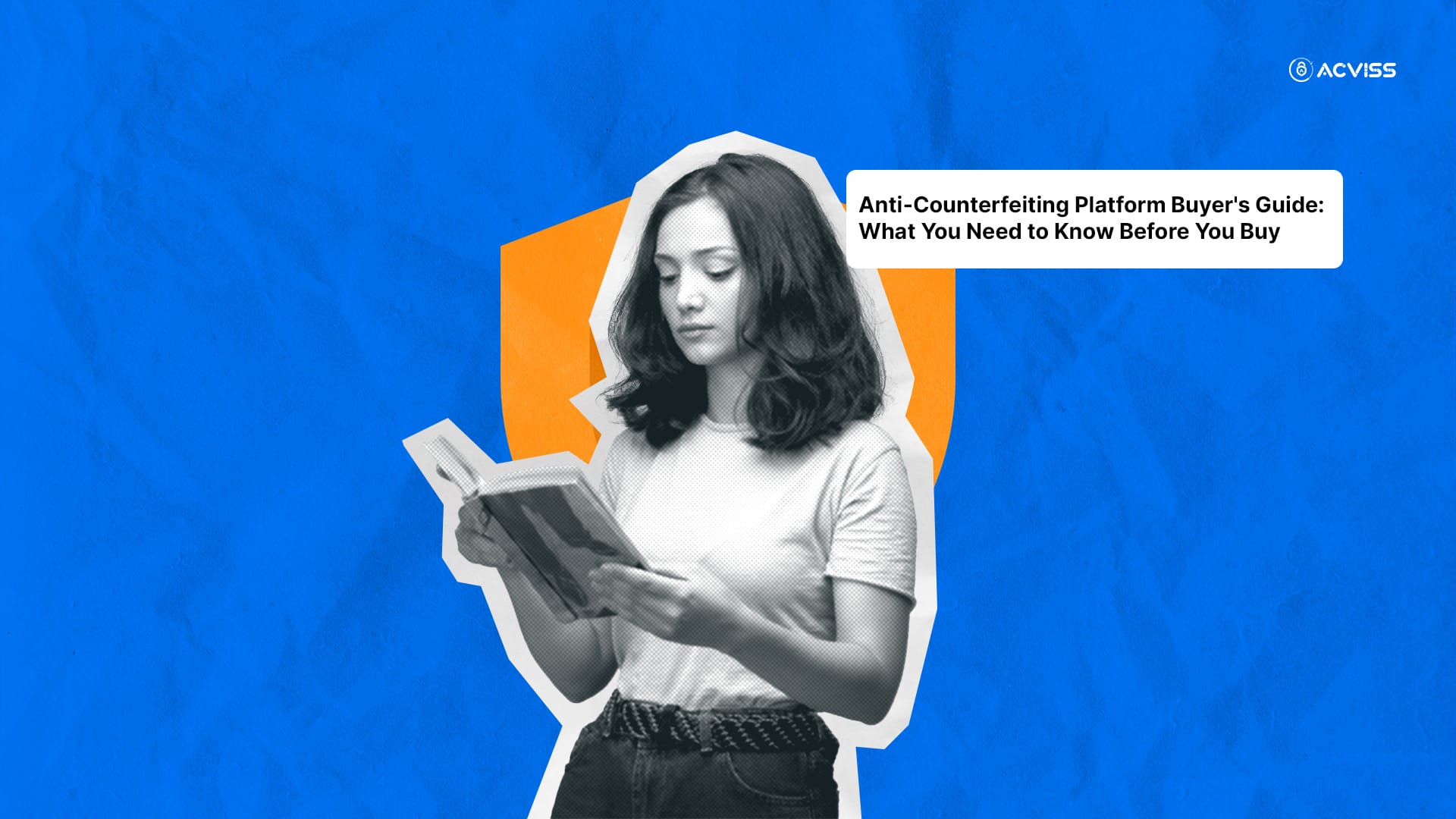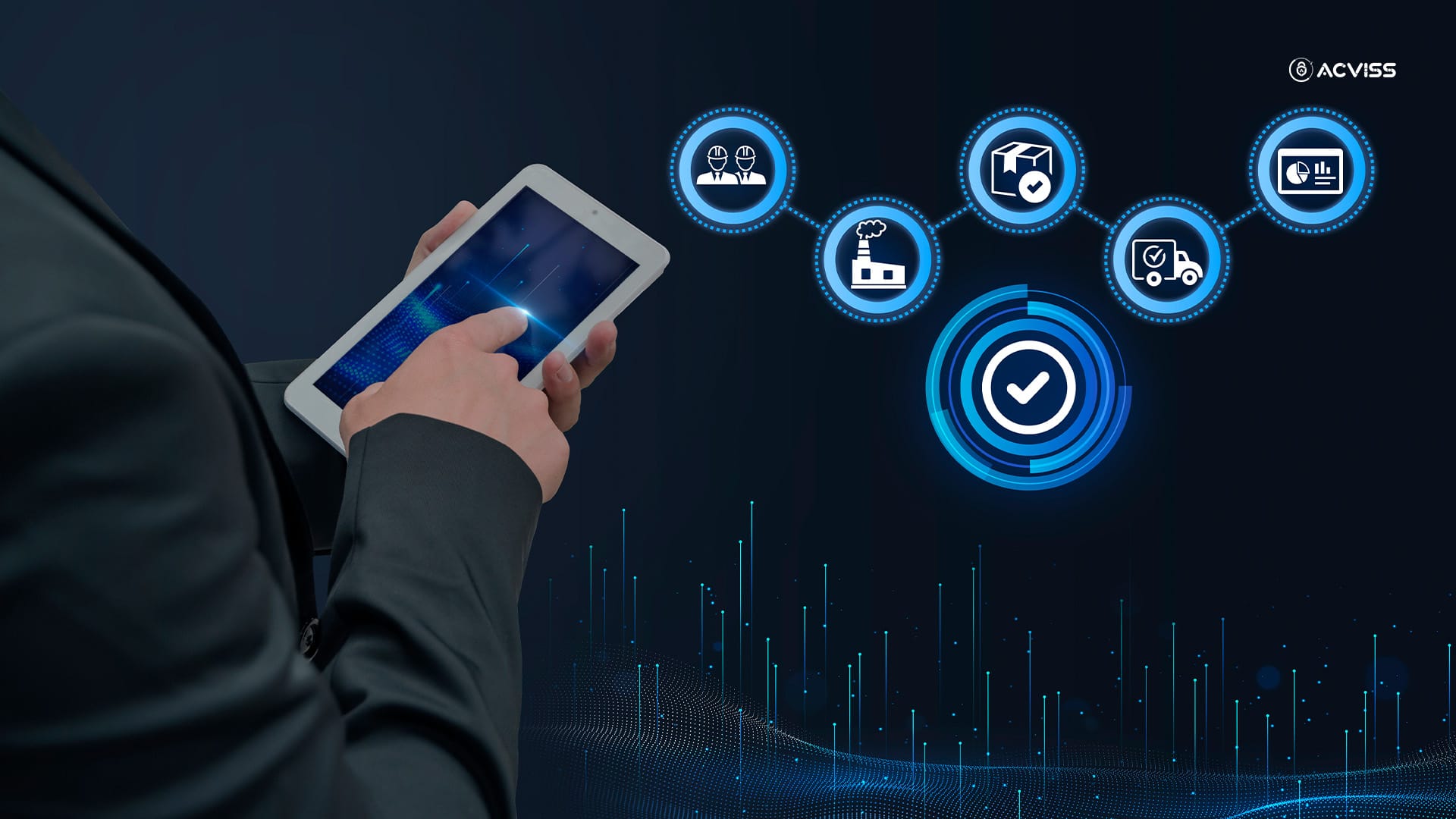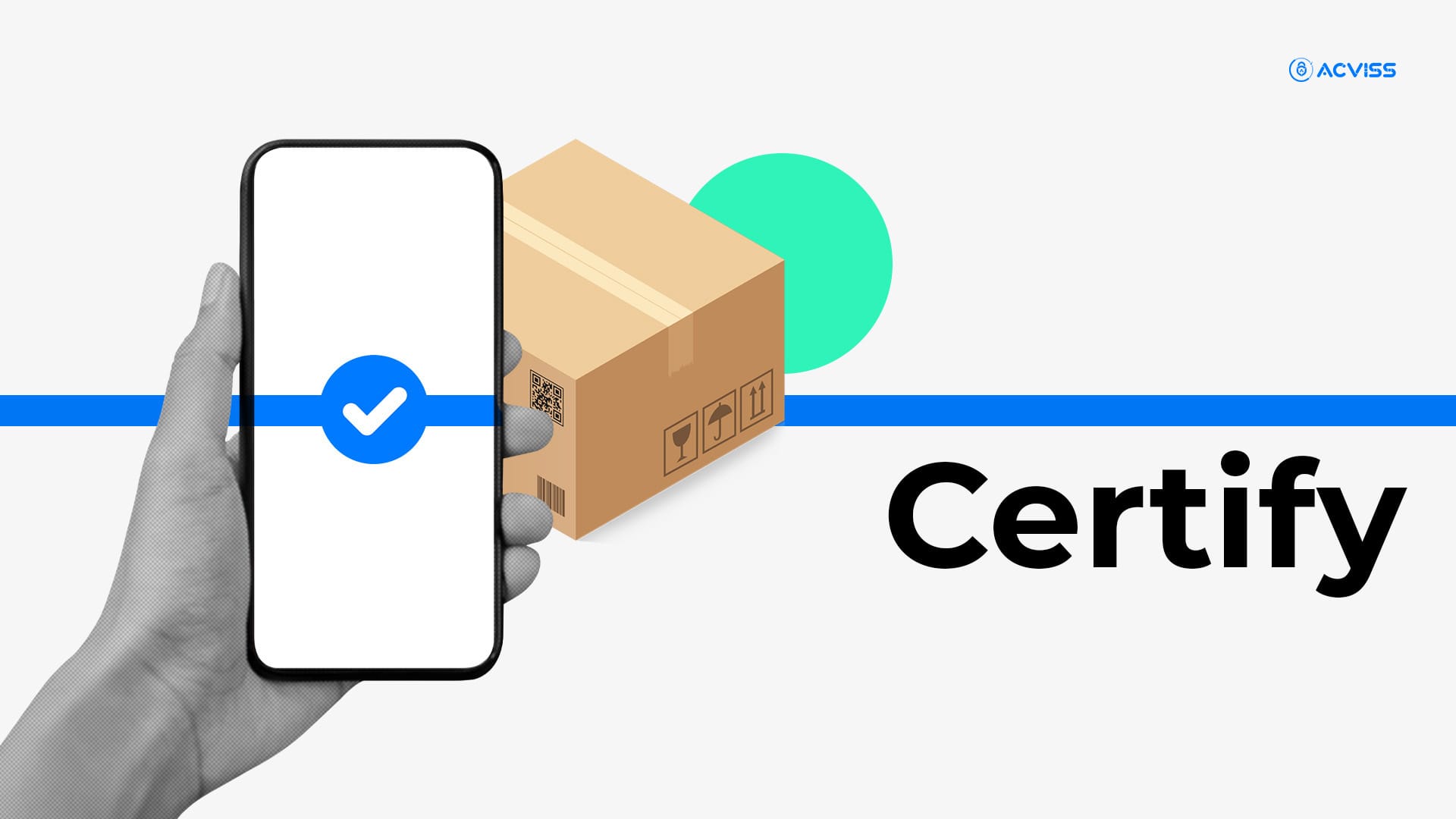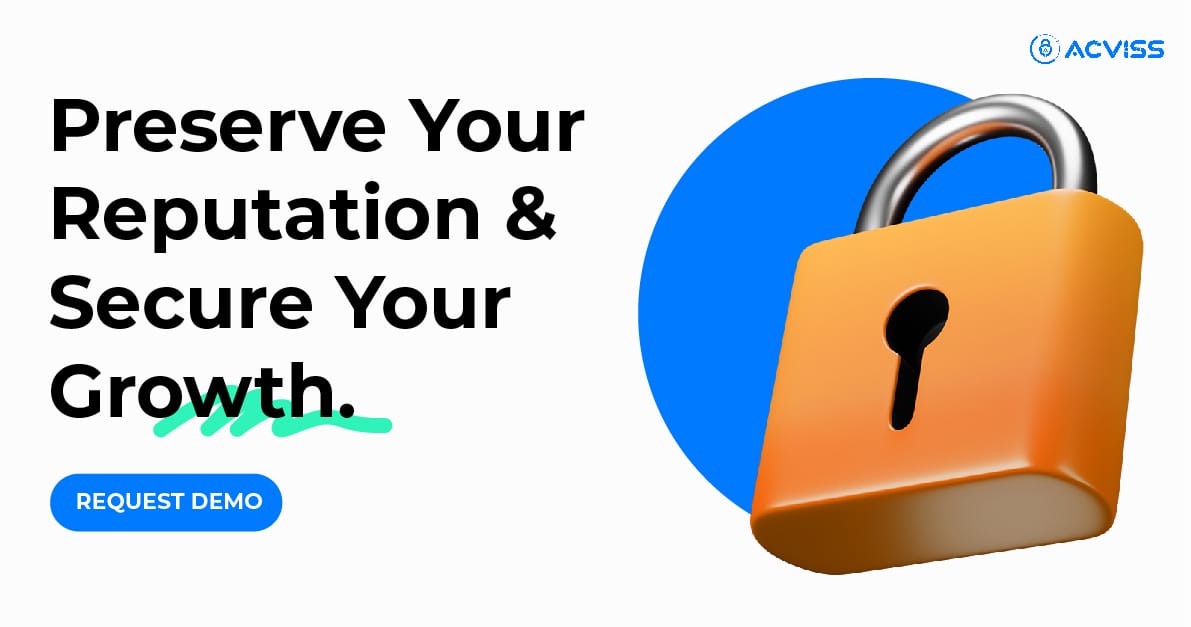Anti-Counterfeiting Platform Buyer's Guide: What You Need to Know Before You Buy

Let us be direct with you. Counterfeiting is costing businesses around $500 billion globally every year. If you're reading this, you're either already dealing with fakes eating into your revenue or you're smart enough to want to prevent it before it happens.
We've put together this guide because choosing an anti-counterfeiting platform shouldn't feel like decoding a mystery. You're a brand manager, supply chain head, or compliance officer with real problems to solve and probably a tight budget to work with. You don't need another sales pitch. You need a practical checklist of questions to ask and features to look for in brand protection solutions.
Here's what we'll cover: the right questions to grill vendors with, must-have features that actually matter, common mistakes that waste money, and how to make a choice you won't regret six months down the line.
Why This Guide Matters (And Why You're Probably Here)
You're here because fakes are either already a problem or you've seen the writing on the wall. Maybe you've caught counterfeit versions of your products online. Maybe a distributor flagged suspicious stock. Or perhaps your CFO just showed you how much revenue you're losing to knockoffs.
Here's the thing: every vendor promises the same outcomes. They all claim their product authentication technology is "cutting-edge" and will "eliminate counterfeits overnight." The market is crowded and noisy. You need clarity, not marketing fluff.
What you actually need is a way to compare these platforms objectively. That's exactly what this buyer's guide gives you.
The Questions You Must Ask Every Vendor

Before you sit through another demo that's 90% slideshow and 10% substance, arm yourself with these questions. These separate serious solutions from vaporware.
1. Technology & Security
Does it support multi-layer protection?
Look for platforms that combine physical and digital security. A QR code alone won't cut it. You want non-cloneable labels paired with encrypted digital verification. Think tamper-evident holograms plus blockchain authentication working together.
What authentication methods does it offer?
QR codes, NFC chips, RFID tags, blockchain verification - what's in the toolkit? More importantly, can these technologies work together? Mobile authentication is non-negotiable in 2025. Your solution should support multiple verification paths because different stakeholders need different methods.
How secure is the data encryption?
This isn't the question to nod through politely. Ask specifically about encryption standards, data storage protocols, and whether they're ISO 27001 certified or GDPR compliant. Your supply chain data is sensitive. Treat it that way.
Can consumers verify products without downloading apps?
This is huge. 70% of verifications happen via mobile, but asking consumers to download an app creates massive friction. App-free scanning through native smartphone cameras should be standard. If a platform requires app downloads for basic product verification, that's a red flag for adoption rates.
2. Integration & Scalability
Does it work with your existing ERP or CRM systems?
You're not rebuilding your entire tech stack. The anti-counterfeit platform needs to play nice with SAP, Oracle, Microsoft Dynamics, Shopify, or whatever you're already using. Ask for specific integration examples from their current clients. Bonus points if they've worked with your exact ERP setup before.
Can it handle your volume?
If you're producing millions of units monthly, say so upfront. Some platforms handle tens of thousands of products beautifully but choke at enterprise scale. Ask about their largest deployment and whether they've handled volume spikes during peak seasons.
What's the realistic implementation timeline?
"A few weeks" is not an answer. You need specifics. How long for pilot programs? Full deployment? Training your team? Integration with existing systems? The average implementation takes 45-90 days for mid-sized operations. Anyone promising overnight miracles is probably overselling.
3. Analytics & Response
What real-time monitoring and alerts do you get?
Your dashboard should flag anomalies immediately. Duplicate scans from different locations. Unusual scan patterns. Geographic deviations. These alerts need to be actionable, not just data dumps. Ask to see their actual dashboard during demos, not prettified slides.
Does it use AI for detection?
Here's a stat worth remembering: 68% of modern anti-counterfeiting platforms now incorporate AI capabilities. Why? Because AI flags fakes 85% faster than manual reviews. Ask specifically how their AI works and what it detects beyond basic authentication.
What KPIs can you actually track?
Scan rates, authentication success rates, counterfeit detection incidents, geographic hotspots, consumer engagement metrics, and ROI tracking. If the platform can't measure it, you can't improve it.
4. Support & Track Record
Who else uses this platform?
Names matter. Ask for case studies from brands in your industry. Better yet, ask if you can speak to one of their current clients. Any hesitation here is suspicious.
What does onboarding actually look like?
Training sessions, dedicated support staff, documentation quality, and response times for technical issues. You need to know this before you're knee-deep in implementation with questions and no one answering.
What's the ongoing support structure?
Is support available 24/7 or just during business hours? Do you get a dedicated account manager? What's included in the base price versus premium support tiers?
Must-Have Features in Any Anti-Counterfeiting Platform

Now let's talk about the features that should be non-negotiable. These are the capabilities that separate platforms worth your investment from expensive mistakes.
Mobile Accessibility
Mobile verification is where the rubber meets the road. Whether it's a distributor checking incoming stock or a consumer verifying a purchase, it happens on smartphones.
Why this matters so much:
70% of all product verifications happen via mobile devices. If your solution makes mobile authentication clunky or complicated, adoption rates will tank.
App-free scanning is the gold standard. Consumers should be able to point their phone camera at a label and get instant verification. No downloads, no friction, no excuses.
The platform should also work offline with queued data syncing. Not every warehouse has perfect connectivity. Your verification system can't grind to a halt because the WiFi is spotty.
Real-Time Analytics Dashboard
Data without insights is just noise. Your dashboard needs to tell you what's happening and what it means for your brand protection strategy.
Look for anomaly detection that catches duplicate scans, unexpected geographic patterns, and suspicious verification attempts. These patterns often reveal counterfeit operations before they scale.
AI-powered monitoring is becoming table stakes. Modern platforms use AI to flag counterfeit patterns 85% faster than manual reviews. That speed matters when counterfeiters are moving fast.
The dashboard should also track ROI. How much revenue are you recovering? What's the reduction in counterfeit incidents? How has consumer trust improved? If your platform can't connect anti-counterfeiting efforts to business outcomes, you're flying blind.
Tamper-Evident Labels & Physical Security
Digital authentication is powerful, but don't ignore the physical layer. Non-cloneable labels create the first barrier counterfeiters have to overcome.
VOID stickers, holographic elements, RFID tags - these physical security features need to work alongside digital verification. Here's why: 30% of counterfeits involve repackaging of genuine containers or bottles. Tamper-evident features catch this immediately.
The labels themselves should be nearly impossible to reproduce. Microprint, colour-shifting inks, proprietary adhesives that self-destruct when removed - these aren't optional extras, they're essential features.
Physical and digital security must integrate seamlessly. A consumer scans the QR code and sees the hologram is intact. Both layers working together create a stronger brand authentication than either alone.
Secure Serialisation
Every product needs a unique identity. Not just different, but mathematically unique and impossible to duplicate.
GS1-compliant serialisation should be standard. These unique IDs enable end-to-end tracking from manufacturing through distribution to end consumers. The EUIPO data shows this approach reduces counterfeits by 70%.
Your serialisation system needs to track every product throughout its entire lifecycle. Where it was made, when it was shipped, and where it's being scanned. This granular product verification creates a digital thread that's nearly impossible for counterfeiters to fake.
Consumer Engagement Tools
Here's something most brands miss: product verification doesn't have to be just about authentication. It can be an engagement opportunity.
When a consumer scans your product to verify authenticity, what happens next? Smart platforms let you build loyalty programs, gather feedback, share product information, and create direct relationships with end users.
Multilingual support matters if you operate in multiple markets. Your verification experience should be seamless whether someone's scanning in Mumbai, Munich, or Miami.
This stat should grab your attention: 71% of consumers say they'd pay a premium for products they can verify as authentic. That verification moment is valuable. Use it.
Common Pitfalls to Avoid When Choosing a Platform
I've seen brands make expensive mistakes when selecting anti-counterfeiting solutions. Here are the traps to sidestep.
Choosing based only on price
The cheapest option usually costs more in the long run. You'll hit limitations, need expensive customisations, or end up replacing the whole system within a year. Evaluate based on total cost of ownership, not just upfront fees.
Ignoring consumer experience
If your verification process is complicated, consumers won't use it. Hard-to-scan codes, confusing interfaces, or multi-step verification processes kill adoption. Test the consumer experience yourself before committing. If you find it frustrating, your customers definitely will.
Overlooking scalability and compliance
Your business will grow. Regulations will change. The platform you choose today needs to handle 10x volume tomorrow and adapt to new compliance requirements. Ask explicitly about scalability paths and regulatory updates.
Forgetting about integration costs
The sticker price is just the beginning. Integration with existing systems, training, and customisation - these costs add up. Industry data shows brands typically overshoot their initial budget by about 20% when accounting for total implementation costs. Plan accordingly.
Non-upgradable technology
Tech evolves fast. A platform that can't incorporate new authentication methods, can't add new features, or lock you into outdated technology becomes a liability. Look for platforms with clear upgrade paths and a history of innovation.
What Makes Certify by Acviss the Best Choice

Look, I promised you clarity without marketing fluff, so let me be straight about why Certify by Acviss deserves your attention.
Multi-layered security that actually works
Certify combines non-cloneable physical labels with QR-based authentication, blockchain integration through Origin by Acviss, and AI-powered monitoring. It's not just one technology - it's a comprehensive approach where multiple security layers work together.
Over 2 billion products globally have been secured using this system.
Real implementation speed
While competitors promise quick deployments and deliver slow ones, Acviss has a track record of 45-day implementations for complex deployments.
One agrochemical company with 6 manufacturing plants and 20 warehouses went from contract to fully operational in that timeframe. Four days after rollout, all facilities were running.
Seamless integration with your existing systems
Certify integrates directly with major ERP systems, including MS Dynamics, SAP, and Oracle. It's not a rip-and-replace situation. The platform layers on top of what you already have, syncing data in real-time without disrupting your operations.
Consumer-friendly verification
The verification experience is genuinely simple. Consumers scan with their native camera app - no downloads required. The Certify app is available for those who want it, with multilingual support and instant authentication. This simplicity drives adoption, which is ultimately what makes any anti-counterfeiting system effective.
Proven results across industries
Kitply, a leading plywood manufacturer, eliminated 99% of counterfeits and quadrupled its sales in a single year after implementing Certify. A major agriscience company eliminated 99% of counterfeit products and protected over 50 million items. These aren't cherry-picked success stories - they're representative of what comprehensive brand protection delivers.
ISO 27001 certified and GDPR compliant
Your data security isn't an afterthought. Acviss maintains serious security certifications and treats your supply chain data with the protection it deserves.
The platform serves over 80 brands globally across FMCG, pharmaceuticals, automotive, electronics, and luxury goods. That diversity matters because it enables the system to handle different requirements, volumes, and compliance needs.
Your Next Steps
So where do you go from here?
First, don't rush this decision. Yes, every day you wait costs money to counterfeits. But choosing the wrong platform costs more than waiting a few extra weeks to choose the right one.
Start with pilots. Most successful deployments begin with 3-6 month pilot programs on specific product lines or markets. This lets you test the platform, work out integration kinks, and prove ROI before full commitment.
Use this checklist during vendor demos. Bring these questions. Take notes on answers. Compare responses across vendors systematically. Make this an objective evaluation, not an emotional decision.
Plan for ROI showing up in 12-24 months. Industry data consistently shows brands reducing counterfeit losses by 40% or more with proper anti-counterfeiting platforms. Your specific ROI depends on your current counterfeit problem, but that 12-24 month payback window is realistic.
Remember what you're really protecting here. You've spent years building your brand, earning customer trust, and developing your reputation. An anti-counterfeiting platform isn't just buying software. It's protecting everything you've built from people who want to steal it.
The counterfeiting problem isn't getting smaller. It's getting more sophisticated. The brands that will thrive are the ones that stay ahead of counterfeiters with technology, not the ones that react after damage is done.
And if you want to start with a conversation about your specific situation - your products, your distribution channels, your particular counterfeiting challenges - that's exactly what Acviss's team does every day. Reach out to our expert team, explain what you're dealing with, and get guidance tailored to your situation.
Your brand deserves protection. Your customers deserve authenticity. Make the choice that delivers both.
